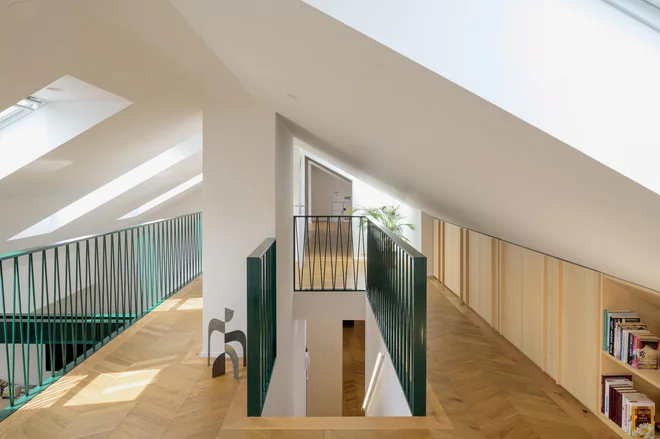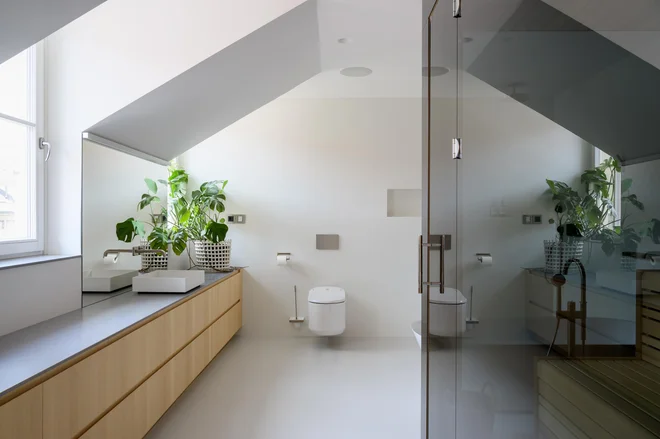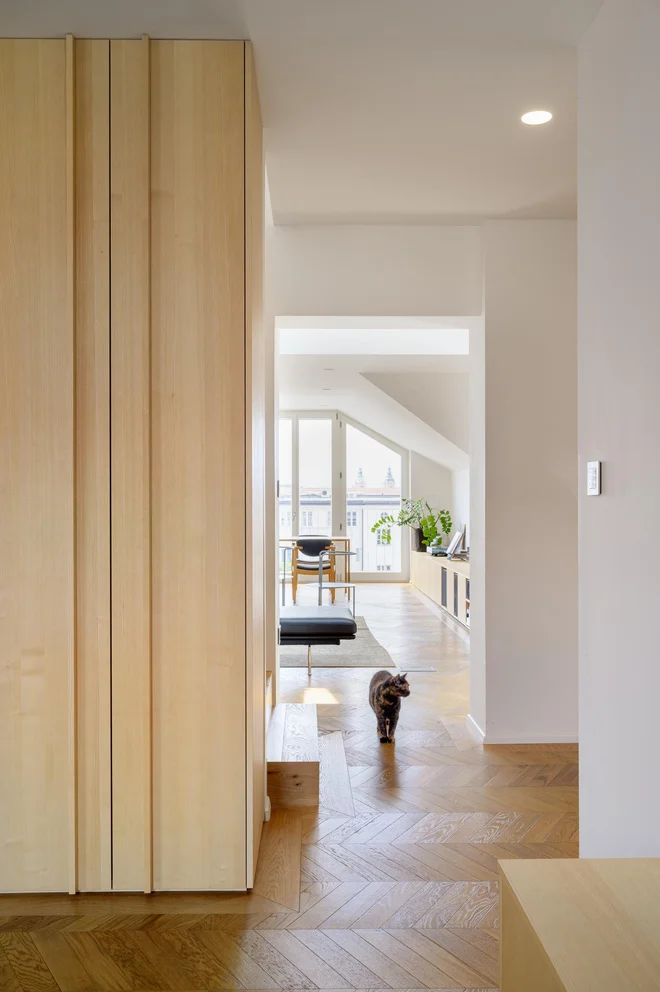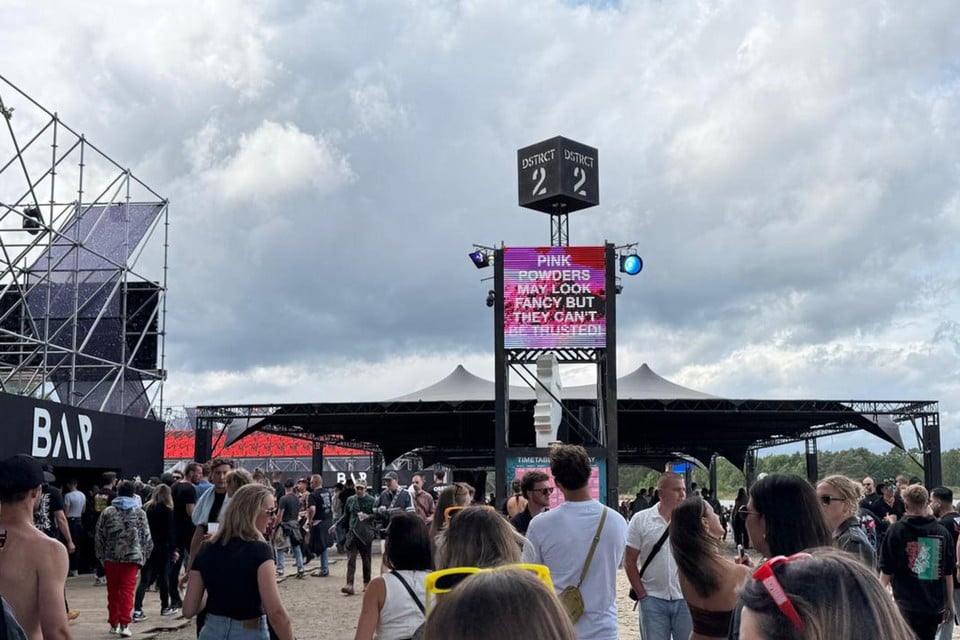Attic apartment flirting with wagner, horn, nostalgic green

“Twenty years ago, the attic apartment purchased by our client was already arranged as a quality attic apartment, but still wanted to remodel it. It is now supposed to give the impression of a modern and air loft in the form of a large associated living unit, ”begins the architect Peter Gabrijelčič The story of a luxuriously large duplex under the roof of a bourgeois house built at the turn of the century. After the intervention of his bureau, the apartment has a completely different image.
The apartment, almost almost 400 square meters, is in a great secession house. The attic, which is almost a common floor due to the very steep roof – has no large sloping ceilings or a low knee wall as a usual attic – changed to Duplex as early as 2004.
The client wanted an open loft apartment, so the partitions in the lower part were demolished and a large and uniform space was acquired, into which they inserted a service center with a staircase to the upper part. Photo: Miran Kambic
To a greater extent, the lower part was used, with the upper, also due to the relatively low standing height (just over two meters), and was classically designed, divided by partitions in much smaller spaces. “However, since the client wanted an open loft, we removed the partitions in the lower center of the attic in part, thus acquiring a large and uniform space, in which we inserted a service center with a staircase leading to the upper part of the apartment. Around this core, which is a kind of island in a large space and separates the central living space, also accessible to guests, from more intimate, family work, can be circulated throughout the surface, « explains the interviewee.
The lower part also includes a bedroom and children’s rooms with restrooms, with a bathroom room and a library on the floor. The multi -member family has thus gained a large, free space with more intimate points, such as the bedroom and the bathroom, and everything else is open, airy, flowing, ubiquitous.
The apartment, almost almost 400 square meters, is in a great secession house.
Disclosed structure as a visual element
By disclosing the ceiling between the floors, the duplex gained the desired volume and allowed family members to play by interweaving the views, among those who are below, and those above. The interlocutor emphasizes this as a very important decision. The steel frame introduces into a modern, open space a rough engineering structure that has an effective artistic contrast, as a nostalgic emphasis in an otherwise design -refined space.

The structure revealed became an artistic element. Photo: Miran Kambic
As Peter Gabrijelčič recalled a decade ago, the doctrine ruled that the structural elements in the apartment need to be hidden, but today we have a welcome opportunity to enrich the space. “But we have undertaken what the floor is hiding almost as an archeological exploration of the terrain. So we discovered elements that also proved to be interesting from an architectural or design point of view, « he adds.
Why did they define them green? “Because of nostalgia. Looking at the times when the house was created, ie in the time of the decline of the Austro-Hungarian monarchy, and if we look at architecture Otta WagnerI am at the time of the Vienna City Railway and their structures, or to department stores Victor Hortethere were all metal parts, especially canopies, green. Just as he was, for example, at the Urban House of Ljubljana or today’s Emporium Gallery. In doing so, we have tried to emphasize the nostalgic past, which is intertwined with modernity and uncertain future, which gives the space a layered time dimension, « sees the interviewee.
The equipment is minimalist, since the space itself is very confidential and speaks with its volume. In addition to the structure revealed, it has few interior elements that would co -create its identity. Perhaps just some smaller sculptural plastic or a specially designed dresser … According to Gabrijelčič, there are no many such elements to emphasize the atmosphere of the space.

By disclosing the structure, Duplex gained volume and allowed the game of intertwining views – among the family members below and those above. Photo: Miran Kambic
Spatial potentials of the attic
What spatial potentials are hidden in the attic and what are the most common mistakes? “The greatest potential of the attic is the arrangement of a large open space, and it is interesting that students or people of free professions are most often imagined there. However, I would say that the attic is suitable for someone who wants openness and has or have enough money to afford it, or have that wish, but has no resources to finally arrange the entire apartment.
Above all, young people start living in a large single space, which is slowly bounded by the expansion of the family. In any case, attic spaces are not suitable for renovation into small classic apartments with a minimum living standard. Small spaces under an oblique roof often do not even meet minimal standards, so they are not a solution to solving the distress of socially disadvantaged people, « recalls architect, also a deserving professor of the University of Ljubljana.

Due to the very steep roof, the attic is almost a normal floor – it does not have very sloping walls or a knee wall as a normal attic. Photo: Miran Kambic
Remembers the times of his studies when they are professor’s students Edward Ravnikar or his rooms 25 at the Ljubljana School began the campaign of the attic arrangements or exploring potentials for low -cost apartments in Ljubljana. They found that there was a huge residential potential in the Slovenian capital in the unused attic spaces.
At the time, like many architects, a sculptor, the painter, they also set up apartments within this campaign. This was made possible by the state in the 70th and 80s, and the Jazbinšek law later became their full owners, according to Gabrijelčič.
At that time, it was fashionable that attic apartments had been arranged in contrast between the white walls and the dark painted sloping ceilings of spruce observations. They were also dark, often from a dark clinker from Ljubečna. According to him, this was a very grounded and ubiquitous space. This was followed by a completely opposite trend – a perfect whiteness, in white they also painted wooden elements, which made the attic as an almost intangible, abstract space, in which man or his stay could breathe more.
Large, open, air spaces bring a greater width of the spirit, smaller, and narrow ones are somehow grounded or domesticated.
Peter Gabrijelčič, architect
“If the space is saturated with colors, the elements, such as, for example, Victorian houses, one somehow disappears, as the space overrides it with its density. Benedictine order, for example, commanded completely white monastery spaces, even without excess equipment and everything unnecessary, as one can thus devote himself to others, in their case God, and today, human relationships. In an empty space, a person steps into the forefront, « he states.
The steel frame introduces into a modern, open space a rough engineering structure that has an effective artistic contrast, as a nostalgic emphasis in an otherwise design -refined space.
Errors increase the confession of space
Not long ago, if we tried to cover up all the mistakes in the structures, all the reworks, we want to discover the interesting traces of the time written in the building today, says Gabrijelčič. There is a tendency for architects to explore almost archaeologically what all space is hiding in its musculature, in its walls, floors and ceilings. Perhaps a picturesque brick wall or interesting ceilings, forgotten metal construction.

The staircase service core separates a more public and more intimate part of the apartment. Photo: Miran Kambic
When you disclose and expose the once -built door or window, you show the history of space. It becomes more eloquent and more professed and as such does not require additional art interventions, since with the exposed material history it is an artifact in itself. “Dosing what you show to what extent and how, that is, the compliance of material, color and volume, symbolic, functional, visual, is the task of the architect. It depends on whether the space or object will come to life, sound like architecture, or whether it will only remain a simple building or naked engineering structure, « said the interviewee.
Duplex apartment at the Secession House in Ljubljana
Client: private
Performance: 2020–2024
Square footage: 380 m2
Authors: Peter, Boštjan and Aleš Gabrijelčič (Architecture Bureau)
Contractors: Osm, doo








